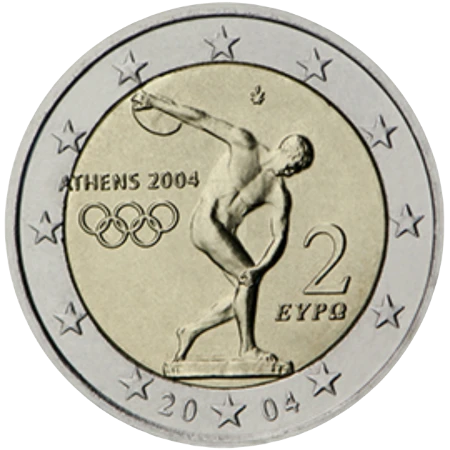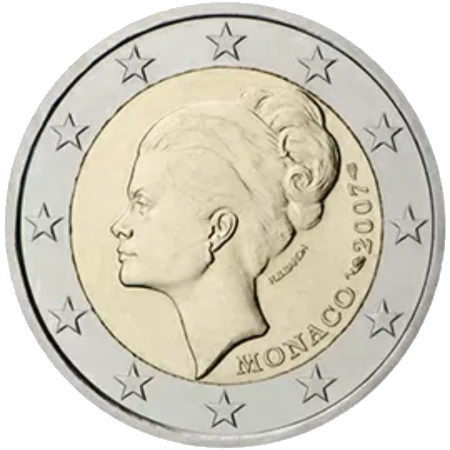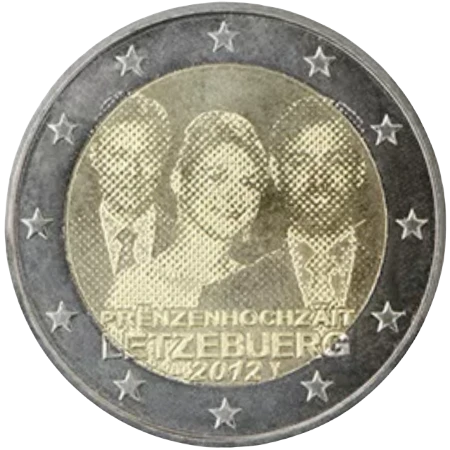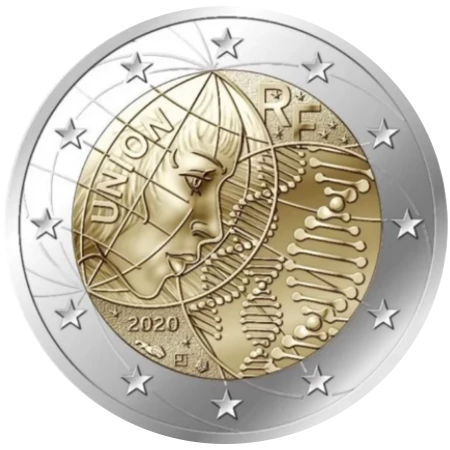Yesterday, May 13, 2024, marked the 20th anniversary of the release of the first commemorative 2-euro coin in history. To celebrate this significant milestone, I thought it would be a good idea to chronologically review what I consider to be the most important commemorative 2-euro coins.
By “most important” I don’t mean the most valuable or rare, but those that have had the greatest impact on shaping what we now understand as the collection of commemorative 2-euro coins.
Let’s get started:
Greece 2004 – Olympic Games
The first commemorative 2-euro coin in history was the 2-euro coin from Greece in 2004, dedicated to the Olympic Games held in Athens that year.

Issued on May 13, 2004, it was the first in a collection that, over these 20 years, has become one of the most significant in numismatic history, both in scope and in the number of collectors.
As I write these lines, more than 500 coins have been issued, which I personally estimate are collected, in one way or another, by over 300,000 people across the European continent.
Germany 2006 – Schleswig-Holstein
The 2-euro coin from Germany in 2006, dedicated to the federal state of Schleswig-Holstein, was the first coin in the first thematic series of euros issued by a country: the Bundesländer series, dedicated to the German federal states.

The series of 2-euro coins involve a specific country issuing one (usually) coin per year that has a thematic connection with its coins from other years.
Since Germany started the Bundesländer series in 2006, six other countries have followed suit. Today, we have series as short as four coins, like the Regions of Latvia series, or as long as 50 coins, like Spain’s UNESCO World Heritage series.
The 13 coins of the 2007 Treaty of Rome Series
In 2007, the first example of international coordination in the issuance of 2-euro coins took place: the common series dedicated to the 50th Anniversary of the Treaty of Rome.
For this series, the European Commission coordinated the 13 states that comprised the Eurozone at the time to release a coin featuring the same design for all countries, with only the language of the inscriptions and the name of the issuer differing. And to release it on the same day, March 25, 2007.
Since then, there have been five common coin issues, the latest in 2022 for the 35th anniversary of the Erasmus Program. Additionally, there have been a few common mini-series, where two or three countries agreed to issue the same design, such as in 2018 when the three Baltic republics celebrated their centennial.

Additionally, the 2007 2-euro coin from Luxembourg dedicated to the Treaty of Rome was the first to incorporate what is technically known as a latent image and popularly as a hologram. This technology, invented by the Spanish mint (FNMT), allows different images to be seen depending on the angle at which the coin is viewed. In the case of the Luxembourg coin, one angle shows the original design and another shows the portrait of Grand Duke Henri.
This technology was used because Luxembourg law requires that the portrait of the reigning Grand Duke appear on its coins. However, Helmut Andexlinger’s original design did not leave space for the portrait, so the latent image was incorporated as a solution to this dilemma.
Monaco 2007 – Grace Kelly
Although there had been some previous instances of coins that were not circulated but were issued exclusively in collector’s editions, the 2-euro coins from Monaco in 2007 dedicated to Grace Kelly marked the beginning of a type of collecting that had been almost absent in 2-euro coins until then: speculative collecting.

With a measly 20,001 coins minted, the Grace Kelly coin was, at the time of its issuance, the 2-euro commemorative coin with the lowest mintage. As we mentioned earlier, there are around 300,000 collectors of 2-euro coins, so the mintage fell far short of demand, causing the coin to rise in price in the secondary market to over 3,000 euros.
The result was that a new type of collector with a more investor-oriented profile entered the world of 2-euro commemoratives.
Thus, the three types into which commemoratives can broadly be divided would be configured as follows: a) those intended for circulation, b) those intended for collectors, and c) those intended for investors.
Luxembourg 2012 – Wedding of Guillaume and Stéphanie
In 2012, the European Commission granted permission to Eurozone countries to issue two commemorative coins per year, instead of just one as had been done previously. The first country to take advantage of the new regulation was Luxembourg, with its 2-euro coin dedicated to the Wedding of the Hereditary Grand Duke Guillaume and Stéphanie de Lannois.
This coin is also the first to use a special minting technology which basically involves reproducing a real photograph on the metal of the coin.

After its issuance, the number of commemorative coins issued per year exploded thanks to the change in rules by the European Commission and the entry of new countries to the Eurozone, rising from 16 in 2011 to 36 in 2023.
Luxembourg, for its part, would issue several more coins with photographs, even going so far as to issue in some years (before the European Commission intervened and stopped them) the same coin in two different versions, one with a traditional engraving and another with a photograph.
San Marino 2013 – John Fitzgerald Kennedy
Some countries have a rather extensive history of issuing their coins with the aim of maximizing profits from collectors, using themes that have very little to do with the history or culture of the issuing state.
The most blatant case was that of San Marino and its attempt to issue a coin in 2013 dedicated to John Fitzgerald Kennedy on the occasion of the 50th anniversary of his assassination. It was a shameless appeal to the most powerful numismatic market in the world, the United States, with theme that had absolutely nothing to do with San Marino or Europe.

This coin was never issued, mainly because the European Commission objected to the theme during the mandatory consultation period that any design must undergo. It was replaced by one dedicated to Pinturicchio.
Thanks to this attempted issuance, and to prevent such thematic abuses from happening again, the Commission finally officially defined which themes could be depicted on a coin: those related to a country of the European Union.
However, this did not prevent San Marino from betraying the spirit of the rule in 2016 by dedicating a piece to William Shakespeare, in a clear attempt to court the British numismatic market.
France 2020 – Medical Research
Until 2020, the themes of commemorative 2-euro coins could be classified into two main types:
- Things that had already happened, such as anniversaries of births or deaths of important people, significant events in history, or the founding of institutions.
- Things that were going to happen, such as the Olympics or European Presidencies.
However, in 2020, amidst the peak of the pandemic, France issued a coin dedicated to Medical Research, clearly referencing the urgent process of developing a vaccine for COVID. At that moment, a new type of theme emerged: things that were happening.

This new type of coin aims to grab the population’s attention – and maintain morale – about a problem affecting Europe and/or the world. Since the French one was issued, we’ve seen quite a few more pieces dedicated to the fight against COVID, but also in support of Ukraine against the Russian invasion.
I think these coins are the most significant in the collection from a historical perspective. When numismatists 400 years from now come across the fact that four or five states issued multiple coins related to a specific event while it was happening, they’ll be able to grasp the importance we attached to it, we who lived through that event.
To top it off, the French coin was issued entirely on the fly, as the French numismatic program stated that in 2020, the first coin of an annual series dedicated to the Paris 2024 Olympics would be released. But when the Tokyo 2020 Games were postponed to 2021, the French series had to be delayed as well.